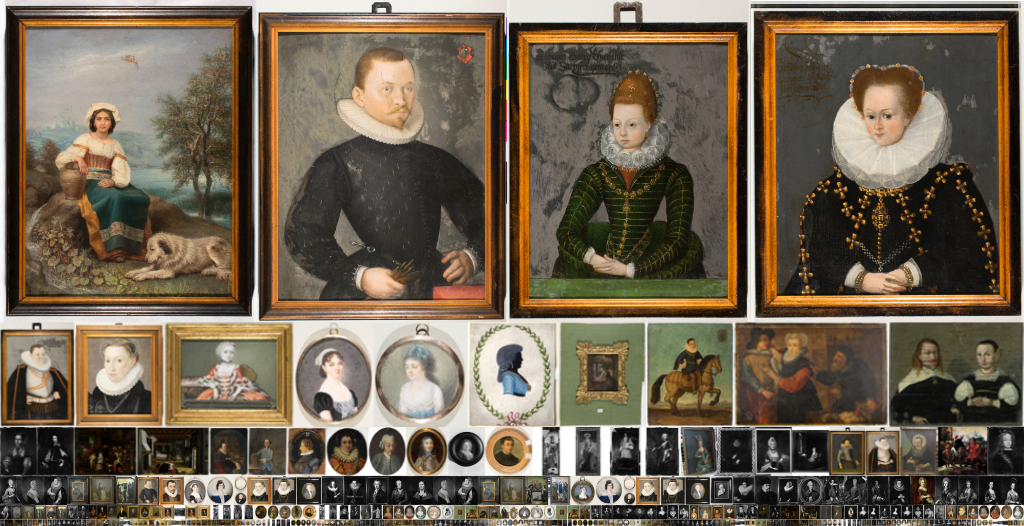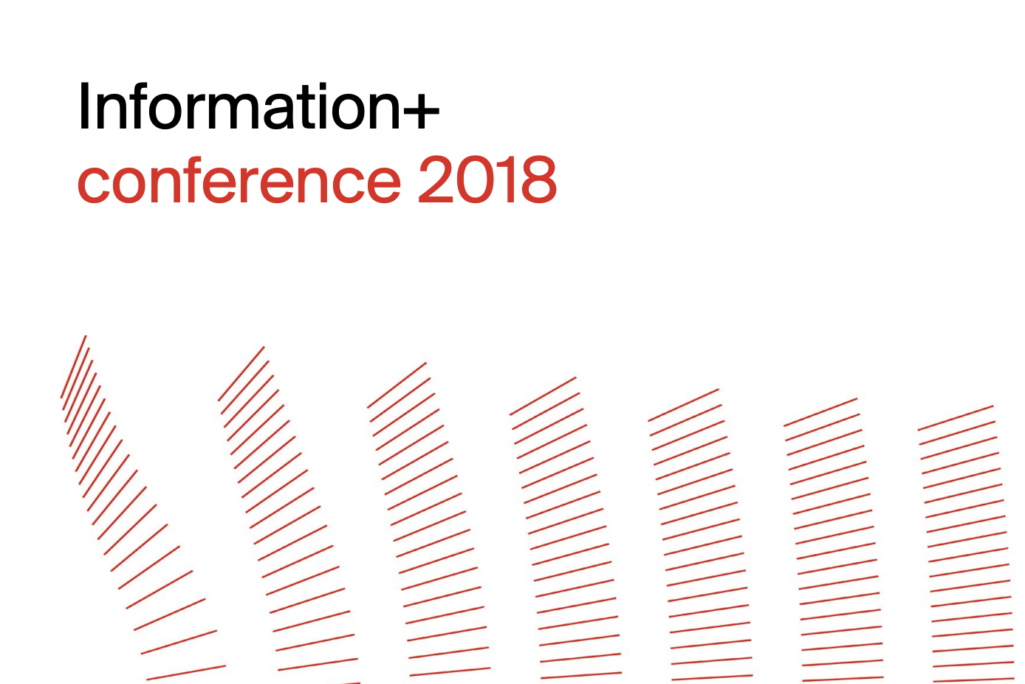Linda Freyberg Information and Image Science
Linda holds a PhD in cultural sciences and was working on the project Restaging Fashion. Her research areas are Iconicity, Diagrammatic Reasoning, Visualization, Semiotics and Information Theory.

Projects Contributions
RESTAGING FASHION
Digital contextualization of vestimentary sources
INFORMATION+ 2018
International conference on information design & visualization in Potsdam
Publications Published Works
Tracing and Telling: Exploring collection holdings through graph-based narratives
Cultural collections have transcended the boundaries of physical showcases and storage cabinets, evolving into intricate digital webs of interconnected data. The research project Restaging Fashion aimed to expand the possibilities for experiencing the linkages in digitized cultural heritage, focusing on the visualization of collection holdings related to the history of garments. Through graph-based narratives, the project investigated the complex interplay between the linear – and at times tentative – art historical discourses and the non-linear explorations of associated cultural heritage data. The resulting visualizations have been designed with the aim to allow for curated and dynamic exploration of the collection along research essays and their interrelated graphs.
“The research is happening in the text fields” – Are Linked Open Data and Art History a good match?
This contribution explores the instructive tensions between art-historical research and semantic data modeling. While the potential of LOD-applications is obvious in terms of standardization and precision some aspects of research may not be formally represented. Therefore we propose to bridge LOD and full text descriptions through information visualization.
Ikonizität der Information – Die Erkenntnisfunktion struktureller und gestalteter Bildlichkeit in der digitalen Wissensorganisation
Die vorliegende Dissertation „Ikonizität der Information“ befasst sich mit der ikonischen Dimension von Wissensorganisationssystemen (WOS) und dem epistemischen Potenzial von Bildlichkeit im Bereich des digitalen Kulturerbes. Dabei bezieht sich die Ikonizität der Information einmal auf eine implizite Dimension auf einer strukturellen Ebene sowie auf explizite Ausdrucksformen wie Visualisierungen, die Objekte und ihre Relationen topologisch darstellen. In einem interdisziplinären Ansatz, der sich unter anderem auf Bild-, Zeichen- und Medientheorie bezieht, werden sowohl aktuelle Visualisierungen als auch historische Entwicklungen in der Theorie und Modellierung von Wissensorganisationssystemen analysiert. Der Theorieteil, in dem die Konzepte Information, Zeichen und Ikonizität adressiert werden, stützt sich vor allem auf die universelle Zeichentheorie und das Konzept des diagrammatic reasoning von Charles Sanders Peirce und bildet die Basis für die Analyse. Die Vagheit und Mehrdeutigkeit oder simultane Pluralität visueller Ausdrucksformen bildet einen ikonischen Überschuss, welcher als maßgeblich für die Erkenntnisfunktion der Bildlichkeit identifiziert wird. Diese Forschung bietet einen theoretischen Rahmen für das Verständnis und die Konzeption von Visualisierungen und multimodalen WOS.
Digitale Kontextualisierung und Visualisierung der Quellen-Trias Bild-TextRealia zu historischer Kleidung, ihrer Ausformung, Zeichenhaftigkeit und Dreidimensionalität
Kleidung, Tracht und Mode kommunizieren die Vorstellung des Trägers von Schönheit, Status, Körper, Form, sozialer Hierarchie und religiöser Zugehörigkeit, kurz: die Identität des Trägers. Die Informationen in den historischen Quellen zur Kleidung, in bildlichen Darstellungen, beschreibenden Texten und textilen Artefakten, werden in dem interdisziplinären Forschungs- und Digitalisierungsprojekt „Restaging Fashion. Digitale Kontextualisierung vestimentärer Quellen“ (UCLAB, Fachhochschule Potsdam) interpretiert und kontextualisiert. Eine tiefe inhaltlche Erschließung, sowie im Projekt angefertigte Digitalisate bilden dafür die Datenbasis. Ein besonderer Schwerpunkt wird zum einen auf der prototypischen 3D-Digitalisierung historischer Kleidung liegen. Zum Anderen wird die Datenvisualisierung als epistemisches Werkzeug sowohl im Prozess der Erfassung genutzt als auch für die Sammlungspräsentation im Web eingesetzt.
Iconicity as Simultaneous Plurality. Beyond the Restraints of Formal Knowledge Organization Systems
In this paper the relevance of Charles Sanders Peirce’s work in the realm of digital knowledge organization (KO) as a contribution to the challenges of the knowledge or information society is demonstrated. In particular his groundbreaking ideas about the diagrammatic aspect of relational logic are crucial and present him as a pioneer of Strukturwissenschaft (Formal Sciences). Following an operational definition of iconicity it is argued that knowledge organization systems (KOS), which formally describe the properties of objects and their relations to each other, always have an iconic dimension that is even more obvious in digital environments. To point out this aspect the development from traditional KOS to digital formal languages is elaborated in order to introduce the area of appliance. The sophisticated metadata structure of the cultural heritage database Europeana as well as simple visualizations including the relations of artists serve as examples in this paper. The leading question is: How can this research facilitate the development of KOS going beyond existing formal constraints? With the logician Sun-Joo Shin it is argued that iconic ambiguity is in fact a simultaneous plurality and does not necessarily end up in contradiction. Referring to Peirce’s Existential Graphs (EGs) Shin proposed a productive differentiation between formal and graphical logic based on the parameters of accuracy and efficiency while Iconicity is enabling the possibility of multiple readings.
Ikonizität als Erkenntnismittel – Vollständigkeit, Verständlichkeit und Kontextualisierung als Grundprinzipien der Visualisierung
Das hohe Aufkommen und die vermehrte Relevanz digitaler Information haben den Bereich der Erschließung, Organisation und Vermittlung von Wissen nachhaltig verändert. Vilém Flusser wies bereits 1978 auf das „Ansteigen der Wichtigkeit von zweidimensionalen Codes“ (Flusser 1998: 22) in unserer Kultur hin, womit er die Kommunikation mittels Oberflächen im Gegensatz zu den linearen Medien der „eindimensionalen Codes“, wie das Alphabet meinte. Diese Oberflächen sind graphisch konstituiert und auch das Web selbst ist ein visuelles Medium auf struktureller Ebene. In diesem Sinne konstatiert auch Horst Bredekamp: „Die hochtechnisierter Gesellschaften durchleben eine Phase der kopernikanischen Wende von der Dominanz der Sprache zur Hegemonie des Bildes.“ (Bredekamp 2000: 102). Die Beschreibung und Analyse des Phänomens Bildlichkeit erfordert eine Bildtheorie, die sowohl in der Lage ist, traditionelle Bildformen als auch digitale Bilder zu adressieren und alle gesellschaftlichen Anwendungsbereiche, von künstlerischen über alltäglichen hin zu wissenschaftlichen Ausdrucksformen einzuschließen oder wie John Michael Krois es formuliert: „Eine Bildtheorie können wir dadurch testen, dass wir nachschauen, ob sie die sonderbarsten Eigenschaften von Bildern verständlich machen kann.“ (Krois 2011: 140)
Density of Knowledge Organization Systems
In this paper the category of density is introduced as a parameter
for the measurement of the level of semantic contextualization
of Knowledge Organization Systems. Based on previous research
regarding the detailedness of description on a metadata level the
concept of network density and iconicity of a system as an indicator
for the accessibility and usability will be considered. Hence this
approach takes the iconic dimension of Knowledge Organization
Systems (KOS) in addition to their sentential foundation into account.
In particular the metadata structure of the cultural heritage
database Europeana and its diagrammatic dimension serves as an
example. The theoretical foundation of this research is provided
by Charles Sanders Peirce’s concepts of signs and his concept of
iconicity.


